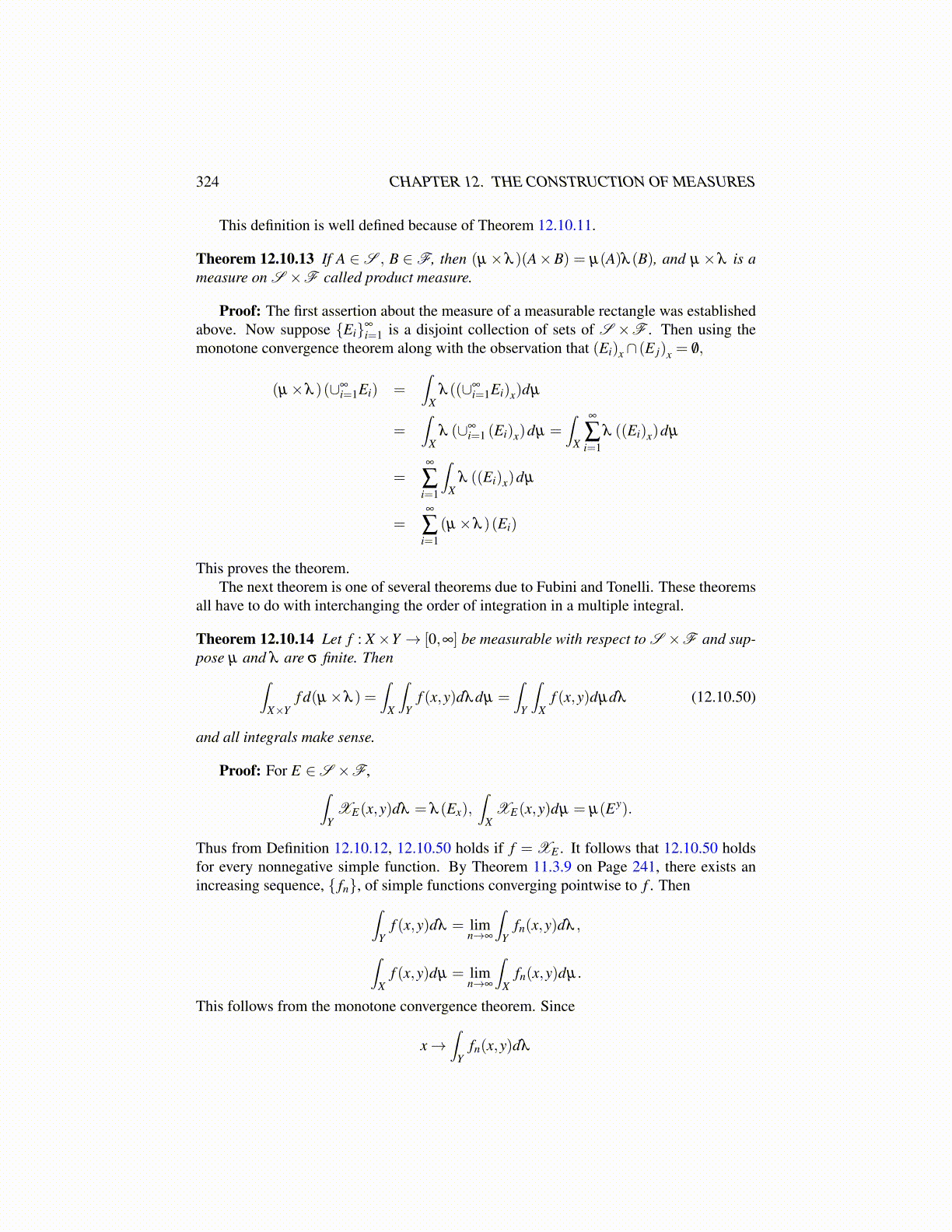
324 CHAPTER 12. THE CONSTRUCTION OF MEASURES
This definition is well defined because of Theorem 12.10.11.
Theorem 12.10.13 If A ∈S , B ∈F, then (µ ×λ )(A×B) = µ(A)λ (B), and µ ×λ is ameasure on S ×F called product measure.
Proof: The first assertion about the measure of a measurable rectangle was establishedabove. Now suppose {Ei}∞
i=1 is a disjoint collection of sets of S ×F . Then using themonotone convergence theorem along with the observation that (Ei)x∩ (E j)x = /0,
(µ×λ )(∪∞i=1Ei) =
∫X
λ ((∪∞i=1Ei)x)dµ
=∫
Xλ (∪∞
i=1 (Ei)x)dµ =∫
X
∞
∑i=1
λ ((Ei)x)dµ
=∞
∑i=1
∫X
λ ((Ei)x)dµ
=∞
∑i=1
(µ×λ )(Ei)
This proves the theorem.The next theorem is one of several theorems due to Fubini and Tonelli. These theorems
all have to do with interchanging the order of integration in a multiple integral.
Theorem 12.10.14 Let f : X×Y → [0,∞] be measurable with respect to S ×F and sup-pose µ and λ are σ finite. Then∫
X×Yf d(µ×λ ) =
∫X
∫Y
f (x,y)dλdµ =∫
Y
∫X
f (x,y)dµdλ (12.10.50)
and all integrals make sense.
Proof: For E ∈S ×F,∫Y
XE(x,y)dλ = λ (Ex),∫
XXE(x,y)dµ = µ(Ey).
Thus from Definition 12.10.12, 12.10.50 holds if f = XE . It follows that 12.10.50 holdsfor every nonnegative simple function. By Theorem 11.3.9 on Page 241, there exists anincreasing sequence, { fn}, of simple functions converging pointwise to f . Then∫
Yf (x,y)dλ = lim
n→∞
∫Y
fn(x,y)dλ ,
∫X
f (x,y)dµ = limn→∞
∫X
fn(x,y)dµ.
This follows from the monotone convergence theorem. Since
x→∫
Yfn(x,y)dλ